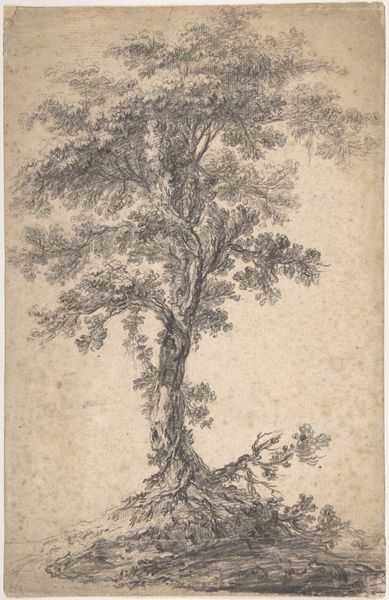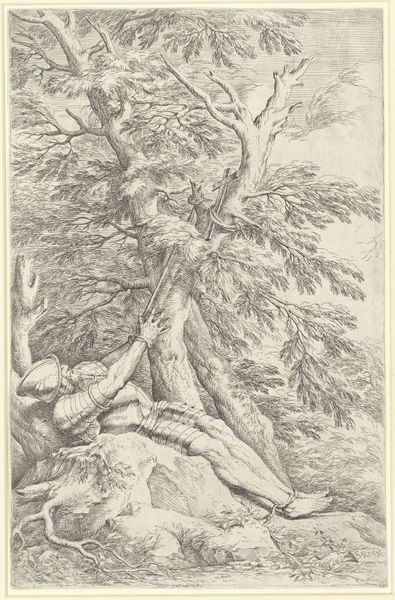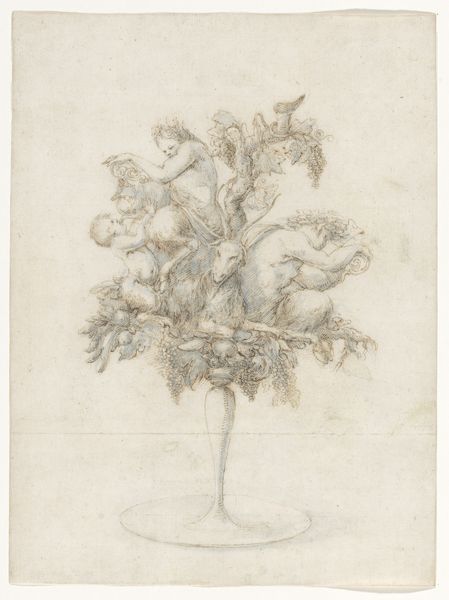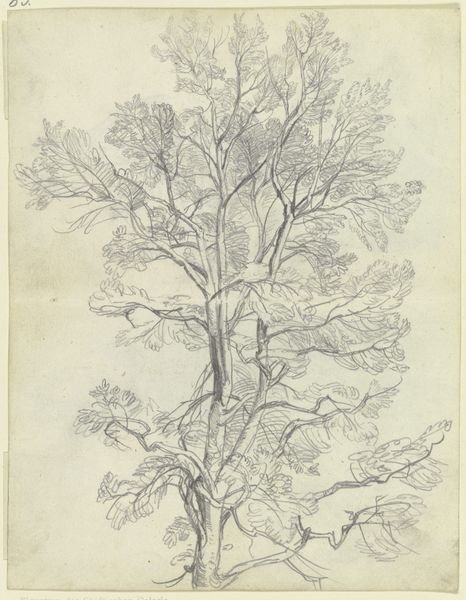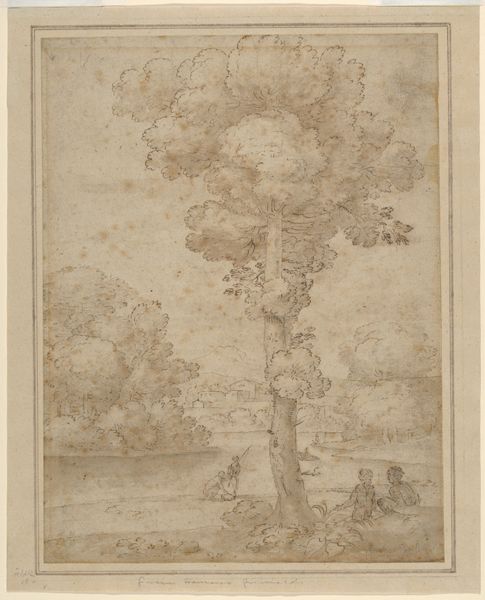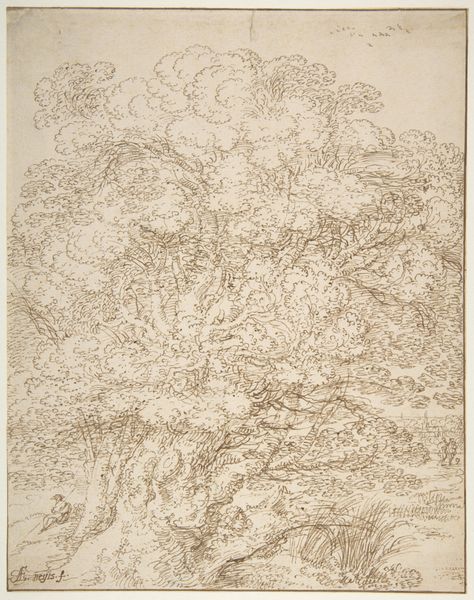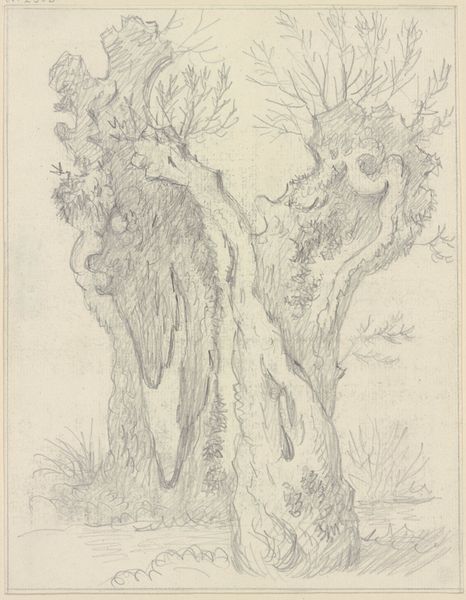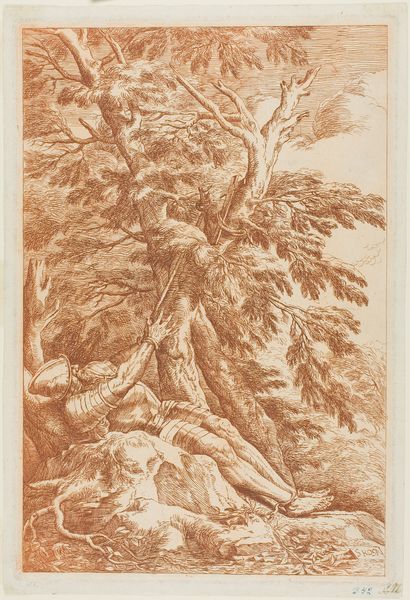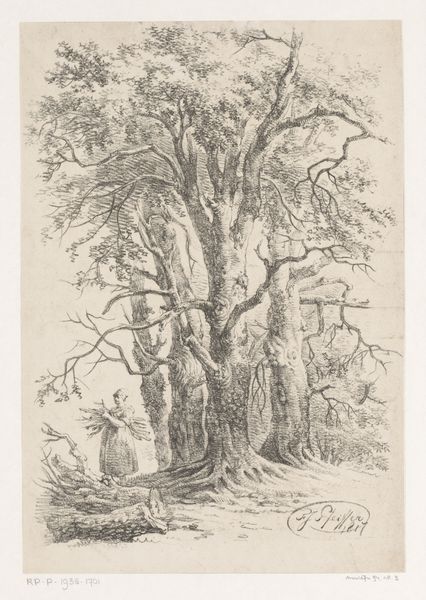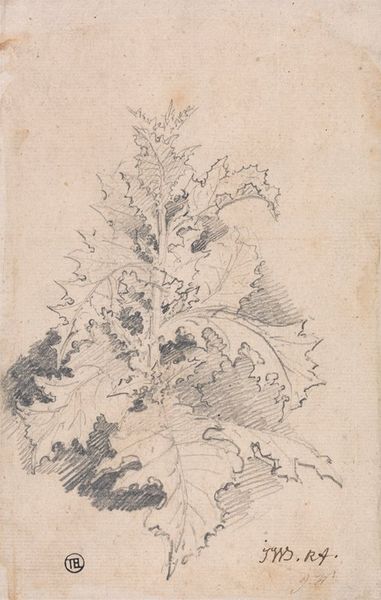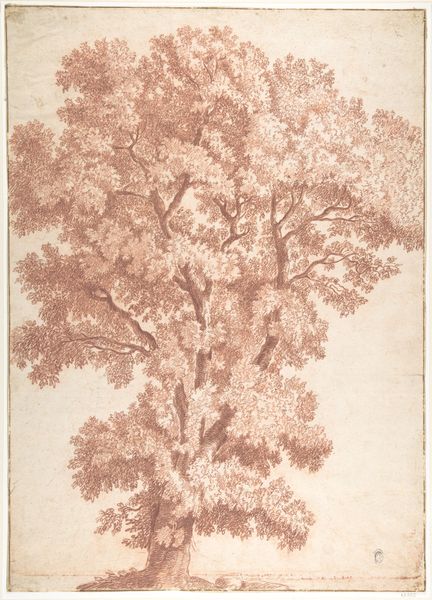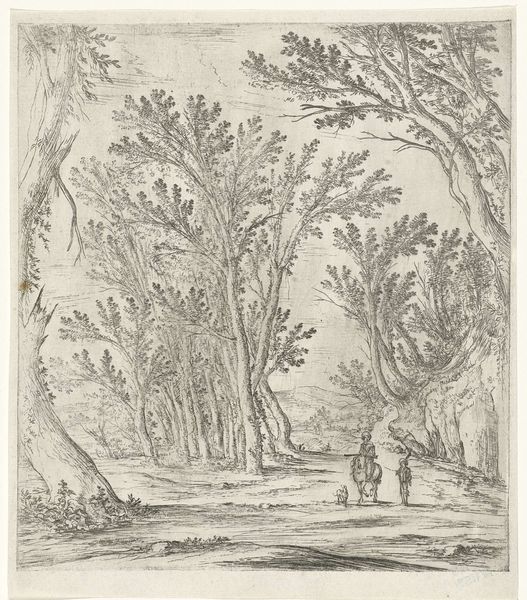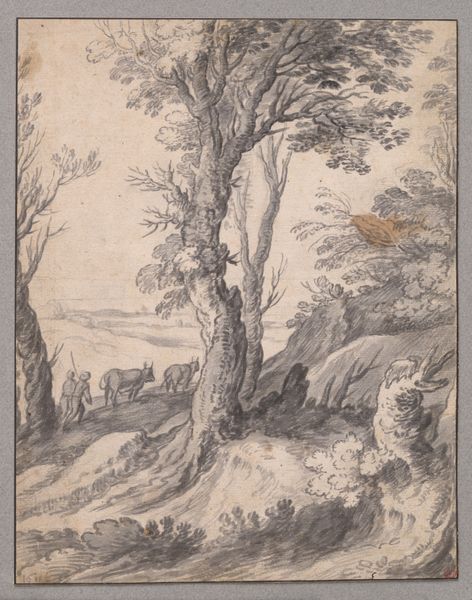
drawing, ink
#
tree
#
drawing
#
landscape
#
figuration
#
ink
#
line
#
northern-renaissance
#
realism
Dimensions: sheet: 8 1/16 x 6 1/16 in. (20.4 x 15.4 cm)
Copyright: Public Domain
Curator: The work before us is titled "Study of a Tree," attributed to Jacques de Gheyn II, likely created sometime between 1580 and 1629. It’s an ink drawing, and you can find it here at the Met. Editor: The first impression I get is a sense of enduring strength. The lines emphasize the twisted texture of the trunk as if this tree has weathered many storms. Curator: It's intriguing to consider the role drawings like this played in the late 16th and early 17th centuries. De Gheyn wasn't simply depicting a tree; he was engaging with broader artistic trends of the Northern Renaissance and an increasing interest in naturalism. Drawings afforded artists like de Gheyn a direct way of engaging with the real world, an act that allowed them to make their own emotional statements regarding an understanding of our own sense of humanity in context. Editor: And that engagement is striking. Look at the lines he uses—so delicate yet descriptive. To me, the tree isn't just a tree, but also a representation of life itself: its resilience, its growth, its eventual surrender. We often see the tree as a sacred symbol. Curator: I agree. These sorts of natural studies are almost a counterpoint to the increasingly stylized and mannered art then popular among aristocratic circles. Here's a different sort of nobility, located in nature, and the ability of the artist to render it so realistically. Editor: Absolutely, and within that realism, the artist captures emotional truths that resonate across cultures and time. Even though the tree is devoid of its leaves, that in no way makes it feel dead, but instead, reminds us that it is preparing for rebirth. Its roots, unseen but inferred, promise continuation. Curator: It prompts us to question the changing function of art. From grand allegorical paintings aimed at instructing moral lessons to drawings centered on personal, scientific explorations of nature. And this reminds us to reflect on our shifting relationship to the natural world, and, perhaps, its ability to teach us. Editor: Yes. This image reminds us that the simplest subject can hold profound depths. Its meaning will continue to evolve.
Comments
No comments
Be the first to comment and join the conversation on the ultimate creative platform.
